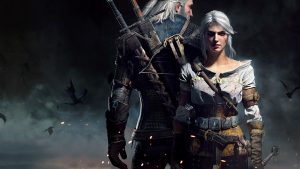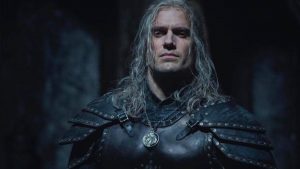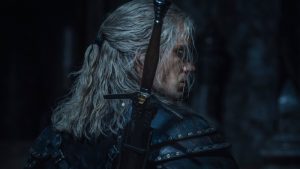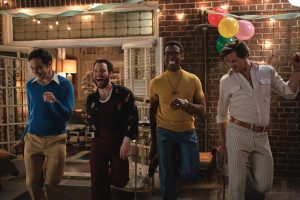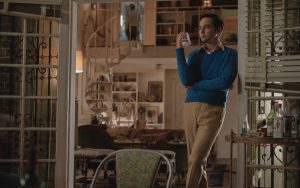I was counting on you, Yen.
Out of all the main cast of The Witcher, no one changed outfits more frequently throughout season one than Yennefer of Vengerburg, the farm girl who transformed into a regal Mage and then spent decades losing herself to a life of opulence and luxury anywhere she pleased in The Continent. Her magic and her exquisite fashion sense combined meant that virtually every time she would reappear after one of her long, mysterious absences, she would have an entirely new wardrobe. And, as a Mage, she had absolutely no qualms about one such dress – a long silver and black number decorated with fringes and tassels – into battle at Sodden Hill, on that fateful night when she wrecked the Nilfgaardian Army with purging flames. It was the last time we saw her in season one, because when the smoke cleared she was nowhere to be found: in-universe, most everyone seems to think she’s dead, having used up all her magic to save Sodden. But new first look images reveal that’s not the case: Yennefer survived, she was imprisoned, and all while still wearing the same dress.
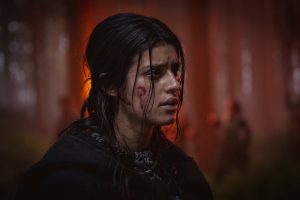
Depending on how you look at it, you could say it’s either slightly anticlimactic from a marketing standpoint or slightly worrying from an in-universe standpoint because you know Yennefer’s in a bad way when she doesn’t even have time to make a quick costume change. No significant upgrade or eye-catching new look seems to be in store for the mighty Mage, unlike the rest of her Witcher castmates. The first of the two new images shows the wounded Mage walking, almost as if in a trance, through the burning forests around Sodden Hill. It’s unclear where she’s headed, but my guess is that she’s trying to find Geralt. Both Geralt and Ciri received visions of the burning battlefield where Yennefer was last seen just after her disappearance, suggesting that the three are “linked by destiny”, as the saying goes…it stands to reason then that Yennefer might have received visions of where Geralt and Ciri are, as well. Her face is bloodied and streaked with ash and grime, and she’s still dressed in filthy, tattered clothes (although she has covered herself with a heavy black cape), but at least she’s alive. Even though we saw many other Mages begin to bleed profusely or even die after expending every last drop of their reserve of chaos magic, Yennefer has somehow been able to survive the traumatic incident mostly unscathed. Mostly, that is, because the second image finds her in an entirely new predicament.
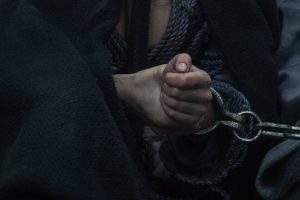
Someone has taken Yennefer captive. We know it must be soon after her misadventure at Sodden Hill, because she’s still wearing the same dress, but her captors have added a new accessory to her look: a dimeritium shackle, which in The Witcher universe is used to restrain the flow of chaos magic and is thus often the only thing capable of containing a powerful Mage. In The Witcher video games, it is mentioned that, in extraordinary cases, Mages have been able to break free of dimeritium bonds, although Yennefer will have to take a little time to recover some of her chaos before she can manage anything that spectacular. She’s gripping her shackled hand as if it’s giving her great pain, which in turn is giving me great pain because I can’t stand seeing anybody hurt our precious Yen.
So who has her imprisoned? Well, Netflix hasn’t said anything officially, but Redanian Intelligence does believe they know the answer, and it’s a minor spoiler for events that probably happen in the first or second episode of the show. If you want to go in completely unprepared, I’ll leave you with this hint: it ties back into other things we’ve been talking about recently, and promises us further exploration of The Witcher‘s world-building. It also means we’ll get to see some very interesting interactions between Yennefer and an important character we still don’t know much about.
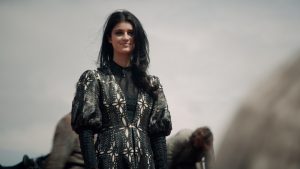
Unfortunately for us, these two latest images reveal very little else about Yennefer’s plight, and so we’re left having to play guesswork. My biggest relief is that this means Yennefer will definitely have her own subplot occurring parallel to the Geralt/Ciri arc. Netflix isn’t trying to keep her fate a big mystery, which I like, because I want to be able to spend more time with this amazing character. As many of you know, Anya Chalotra’s excellent performance as Yennefer was one of the things that kept me hooked on The Witcher, and I am extremely excited to see how her character develops in season two. Sadly, I don’t think we’ll be seeing any more images from The Witcher tomorrow (where is Jaskier, Netflix?!), so now we have to settle down and wait for…whatever’s next, I suppose. A poster? A little snippet of footage to get us all hyped? The Witcher is currently filming, and is still predicted to release sometime in 2021.
So what do you think? How do you feel about Yennefer’s same old look, and what are your thoughts on the reasoning for her imprisonment? Share your own thoughts, theories and opinions in the comments below!

